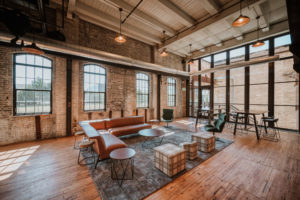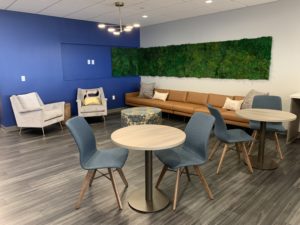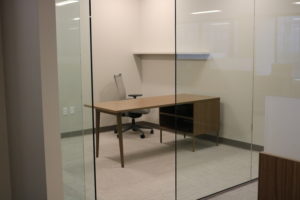Interior Design



Cutting Edge Design
Led by Design Manager, Madeline Smith, the Brothers Interiors design team is a dynamic group of Wisconsin Registered, LEED, and NCIDQ certified professionals. These designers have followed their passion into additional areas of study such as biophilic design, ergonomics, lactation/wellness room design, FitWell building assessments and Well AP training for interiors.
Applying these principles to a wide variety of creative design projects gives our team a strong collaborative drive. We understand that creative projects grow and adapt during the design process and we focus on the best solution for your business. We work hard to collaborate with you on all aspects of the design process, ensuring that your desired project outcome is reached as a team.
Our experienced designers lead the project with listening and information gathering techniques designed to help you prioritize your goals and identify the capabilities you are lacking in your current interior design. We will deliver plans, project charts, finish selections and color programming designed specifically for you. With an extensive product library, we’ll present dozens of options and narrow down choices until we reach the perfect solution. Our experience ensures that life safety, fire, and building codes are always considered. Our full range of services keep us involved in the process until your new interior space is installed and complete.
Interior Design Services Offered
- Concept Development
- 3D Illustrations & Renderings
- Revit Modeling Capability
- Interior Finish Selection & Consultation
- Construction Finish Consultation
- Furniture Programming
- Furniture Specification
- Space Planning
- Project Closeout Guides
Work With Our Professional Interior Designers
- Amy Kopplin
- Madeline Smith
- Zoe Braun
- Lauren Haferkorn
- Megan Theisen
Design for Well-Being
We should be able to work, learn, and heal in places that support our health and allow us to thrive.
Design for well-being addresses our human response to our natural and built surroundings. It is a field of research involving biology, psychology, behavioral and physiological response to the environment, design, and architecture. We consider how people have adapted in response to natural surroundings–having spent most of human history outdoors and now the migration to most of the time spent indoors. This migration has allowed us to survive, but recent findings indicate we could utilize Biophilic Design strategies to better thrive.
Design for well-being applies an understanding of design for well-being to the built environment. It works with other elements such as active design, workplace wellness programs, and sustainable building standards like LEED or WELL Building.
Why Design for Wellness?
Research tells us that humans spend 90% of their time indoors. Design for well being strategies, when performed correctly, help our overall well-being and can decrease stress felt in the environment. Research has also shown positive affects to blood pressure as well as decreased anxiety and improvements to overall happiness. People are a valuable resource to any firm. Supporting well-being can bring bottom-line benefits to most businesses.
Benefits include:
- Decreased absenteeism and use of sick days
- Staff retention
- Better job performance from increased productivity and improved concentration
- Increased healing rates
- Increased classroom learning and graduation rates
- Increased happiness and feelings of patience and comfort
- Decreased retail theft and increased retail sales
